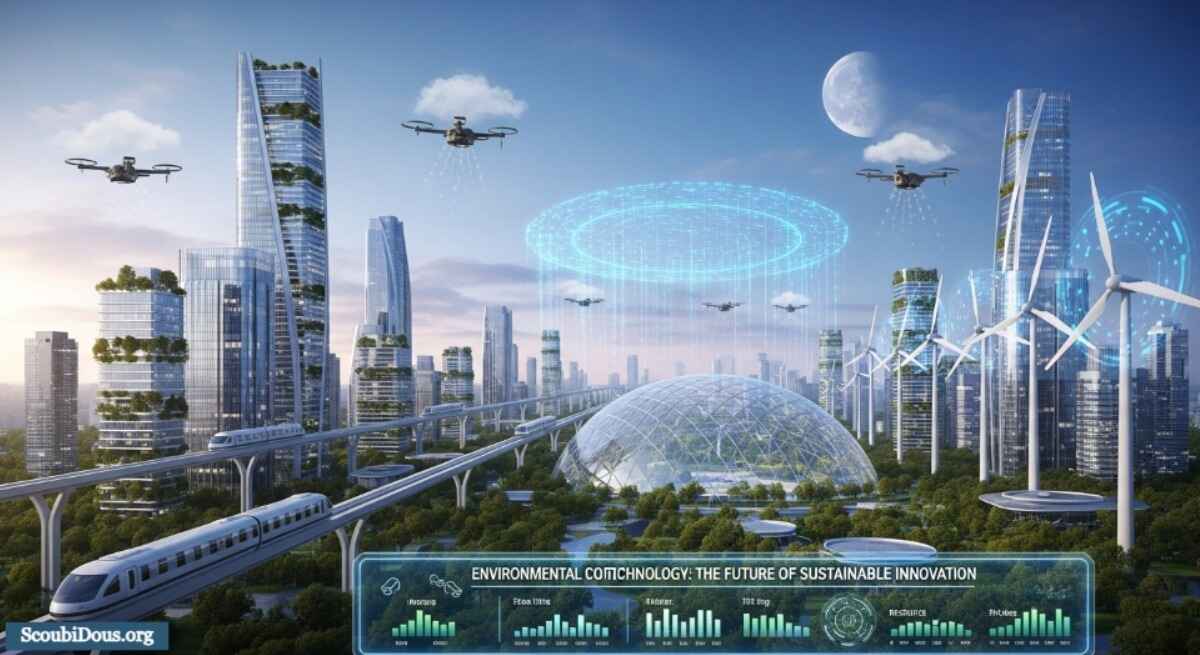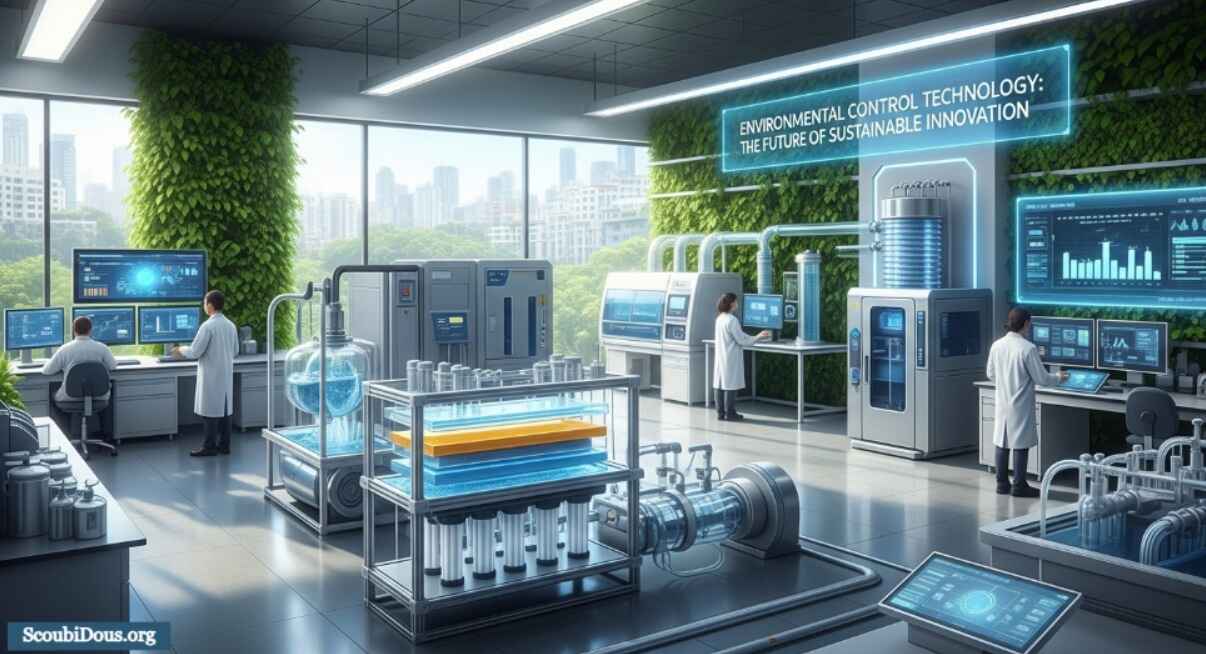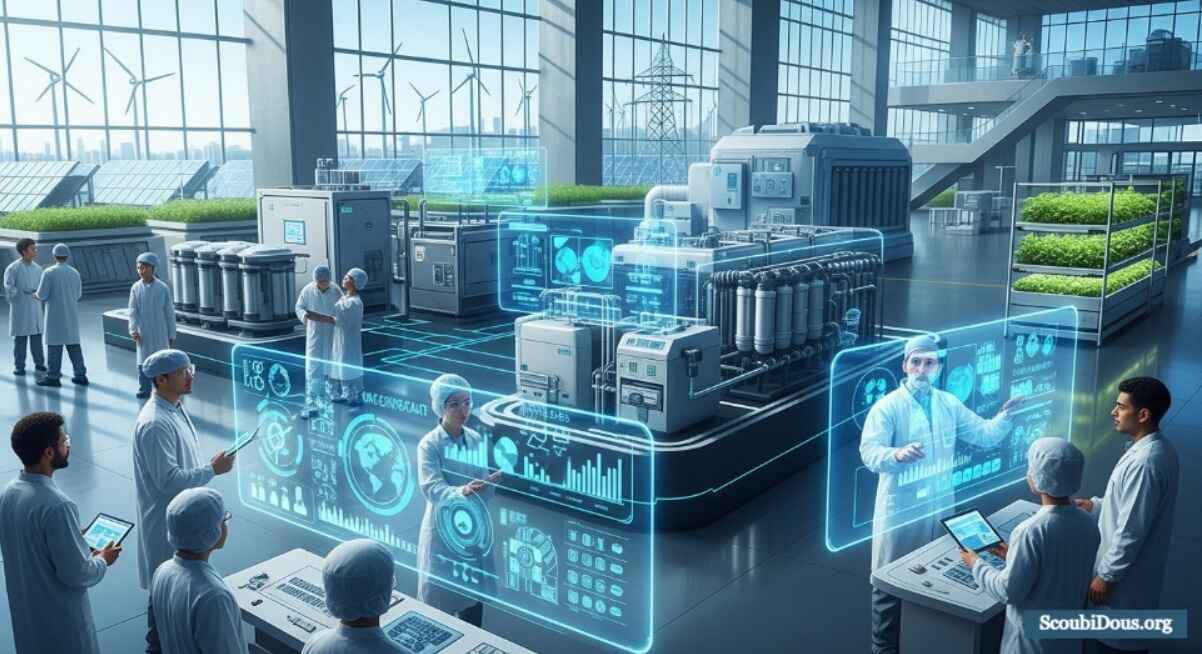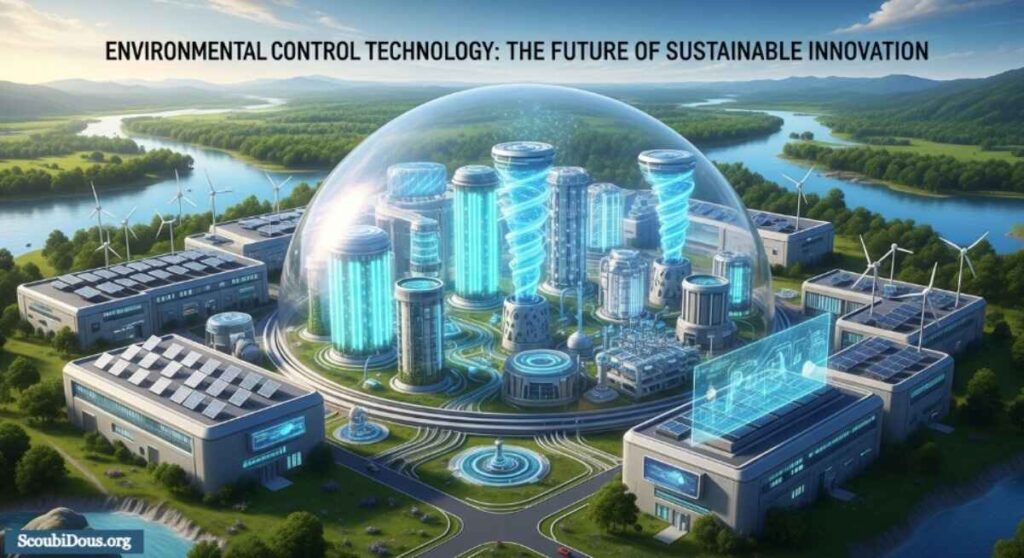Introduction
In an era defined by climate change, rapid industrialization, and urban expansion, environmental control technology has emerged as a cornerstone of sustainable progress.
From managing air and water quality to optimizing energy consumption and waste treatment, this field integrates science, engineering, and digital innovation to maintain ecological balance while supporting human comfort and productivity.
Today’s society faces pressing challenges — rising global temperatures, pollution, deforestation, and resource depletion.
In response, governments, industries, and research institutions are investing heavily in environmental control technology solutions that not only mitigate damage but also actively restore natural ecosystems.
This article explores the full spectrum of environmental control technology — its principles, applications, modern advancements, and the role it plays in shaping a sustainable and resilient world.
What Is Environmental Control Technology?

Environmental control technology refers to a collection of systems, tools, and methodologies designed to monitor, regulate, and improve environmental conditions. These technologies aim to maintain healthy air, water, and soil quality while ensuring efficient energy use and waste reduction.
At its core, it integrates disciplines such as:
- Environmental engineering
- Industrial process control
- IoT (Internet of Things) and automation
- Renewable energy systems
- Climate science and ecology
The main objective of environmental control technology is not merely to limit pollution but to create controlled environments that are both sustainable and adaptive to human needs — whether it’s in factories, laboratories, cities, or agricultural ecosystems.
The Key Components of Environmental Control Technology
1. Air Quality Control Systems
Air pollution remains one of the biggest global health and environmental threats. Advanced air quality control systems are designed to detect and reduce contaminants such as carbon dioxide (CO₂), sulfur dioxide (SO₂), nitrogen oxides (NOₓ), and particulate matter.
Technologies include:
- Electrostatic precipitators
- Catalytic converters
- Air filtration and purification systems
- Smart air monitoring sensors
These systems help industries comply with environmental regulations and protect urban populations from harmful pollutants.
2. Water and Wastewater Management
Clean water is essential for life and industry alike. Environmental control technology supports water sustainability through:
- Advanced filtration systems (membrane and UV filtration)
- Wastewater treatment plants
- Desalination technologies
- Water recycling systems
These technologies help maintain the quality of natural water sources while ensuring safe reuse in agricultural and industrial settings.
3. Waste Management and Resource Recovery
Innovative waste control technologies focus on minimizing landfill waste, recycling materials, and converting waste into energy.
Examples include:
- Anaerobic digestion for organic waste
- Plasma gasification for hazardous waste
- Smart recycling systems powered by AI and robotics
This shift from linear to circular economy models reduces environmental impact and promotes resource efficiency.
4. Climate and Temperature Control
In controlled environments such as laboratories, greenhouses, and manufacturing facilities, maintaining precise temperature and humidity levels is crucial.
Environmental control technology integrates:
- HVAC (Heating, Ventilation, and Air Conditioning)
- Smart sensors and automated controllers
- Climate modeling systems
These solutions ensure energy efficiency while maintaining optimal comfort and productivity levels.
5. Energy Efficiency and Renewable Integration
Sustainable energy management lies at the heart of environmental control technology.
Key approaches include:
- Smart grids that balance energy supply and demand
- Building management systems (BMS) that optimize lighting, cooling, and heating
- Renewable integrations like solar, wind, and geothermal energy systems
Such innovations reduce carbon footprints and operational costs across industries.
How Environmental Control Technology Works

The operation of environmental control technology involves three core stages:
- Monitoring – Collecting environmental data using IoT sensors, drones, and remote sensing tools.
- Analysis – Processing and interpreting this data through AI, machine learning, and predictive analytics to detect anomalies or inefficiencies.
- Control – Adjusting system operations through automation and feedback mechanisms to maintain environmental balance.
This data-driven approach ensures that every environmental variable — from CO₂ concentration to energy flow — is continuously optimized.
Applications of Environmental Control Technology Across Industries
1. Industrial Manufacturing
Factories use automated emission control systems, waste management software, and smart energy solutions to reduce their environmental impact.
2. Agriculture
Precision agriculture utilizes climate control systems, soil monitoring, and irrigation management to maximize crop yield while conserving resources.
3. Healthcare and Laboratories
Cleanrooms and hospitals rely on advanced air and temperature control systems to ensure safety and sterility.
4. Urban Infrastructure
Smart cities utilize air quality monitoring networks, green building technologies, and waste management automation to promote sustainable urban living.
5. Energy and Power Plants
Environmental control systems monitor emissions, improve fuel efficiency, and integrate renewable sources to minimize ecological damage.
The Role of Automation and IoT in Environmental Control Technology
The integration of IoT (Internet of Things) and automation has revolutionized environmental control.
Smart systems now:
- Detect air or water quality changes in real-time
- Automatically adjust environmental parameters
- Predict equipment failures before they occur
For instance, AI-driven control panels in green buildings can lower energy consumption by learning usage patterns and adjusting lighting or HVAC accordingly.
This shift toward intelligent environmental control systems not only enhances efficiency but also significantly reduces operational costs.
Recent Innovations in Environmental Control Technology
Modern advancements are transforming traditional environmental management into a high-tech, data-centric discipline.
Notable innovations include:
- Nanotechnology filters for ultra-fine pollutant removal
- AI-based predictive maintenance for HVAC and filtration systems
- Carbon capture and storage (CCS) technologies
- Smart environmental drones for pollution mapping
- Blockchain-based carbon tracking systems
These breakthroughs demonstrate how environmental control technology is becoming an essential part of sustainable infrastructure and industrial evolution.
Benefits of Environmental Control Technology
- Improved Environmental Quality – Cleaner air, water, and soil.
- Regulatory Compliance – Meeting international environmental standards.
- Economic Efficiency – Lower operational costs through energy savings.
- Health and Safety – Reduced exposure to harmful pollutants.
- Sustainability – Supporting long-term ecological balance.
Challenges and Limitations
Despite its potential, environmental control technology faces obstacles such as:
- High implementation costs
- Lack of technical expertise in developing regions
- Data management complexities
- Integration challenges with legacy systems
However, ongoing innovation and government incentives are gradually overcoming these barriers, making these systems more accessible worldwide.
Future of Environmental Control Technology

The future of environmental control technology lies in AI-driven, decentralized, and sustainable ecosystems. Emerging trends include:
- AI and machine learning for real-time optimization
- Integration with renewable microgrids
- Biotechnological approaches to pollution control
- Smart materials for passive environmental regulation
- Global policy frameworks promoting environmental tech adoption
By 2030, experts predict that environmental control systems will become standard in most industries, playing a pivotal role in achieving net-zero emission goals.
Conclusion
Environmental control technology stands at the intersection of innovation and responsibility. It empowers industries and communities to function efficiently without compromising environmental health. As we advance toward a more sustainable and interconnected world, these technologies will not only preserve natural ecosystems but also redefine how humanity coexists with the planet.
Embracing environmental control technology today means investing in a cleaner, smarter, and more resilient future for generations to come.


